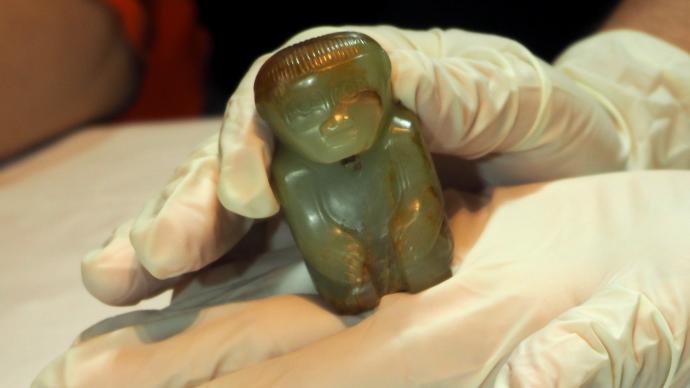
This exhibition is the first special exhibition of the Shanghai Museum's "Why China" cultural relics and archaeology exhibition series. It will display more than 200 pieces (sets) of precious cultural relics from the Xia, Shang and Zhou dynasties, bringing together many heavy exhibits unearthed from Henan archaeology.
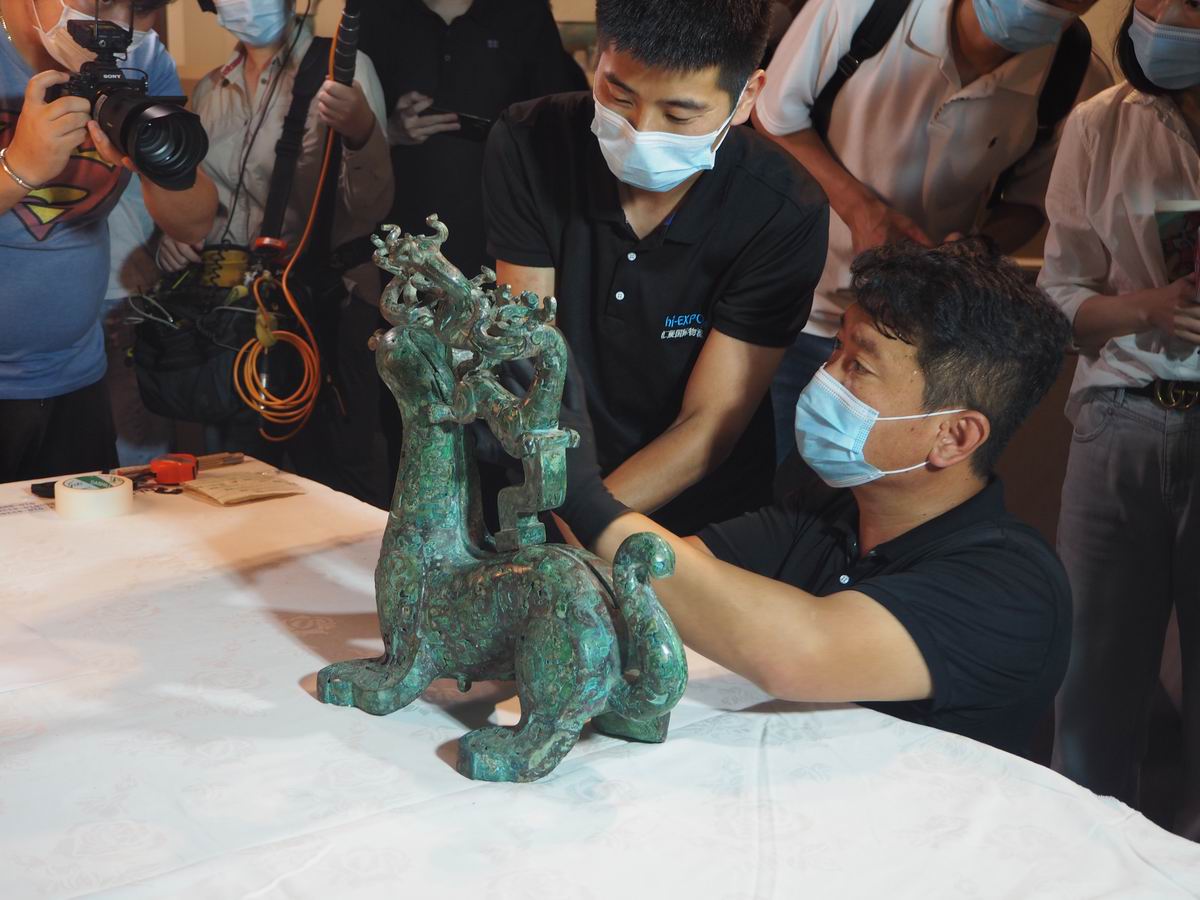
The installation site of the inlaid turquoise mythical beasts (late Spring and Autumn Period)
According to reports, this exhibition is guided by the Shanghai Municipal Bureau of Cultural Relics, the Henan Provincial Bureau of Cultural Relics and the Institute of Archaeology of the Chinese Academy of Social Sciences, and sponsored by the Shanghai Museum and Henan Museum. According to Chen Jie, deputy director of the Shanghai Museum, the exhibits on display this time are hard-won, and they are basically important exhibits from various museums in Henan. ""This exhibition focuses on the Xia, Shang and Zhou dynasties, a critical period in the development of China's history. He chose to cooperate with Henan Province because Henan was the core area of the Xia, Shang and Zhou dynasties, and three generations of capitals were built here." Chen Jie said that from archaeological discoveries Speaking of, Henan Province is also one of the most important provinces in China for archaeological discoveries. It is the origin of modern Chinese archaeology and one of the provinces with the most new archaeological discoveries.
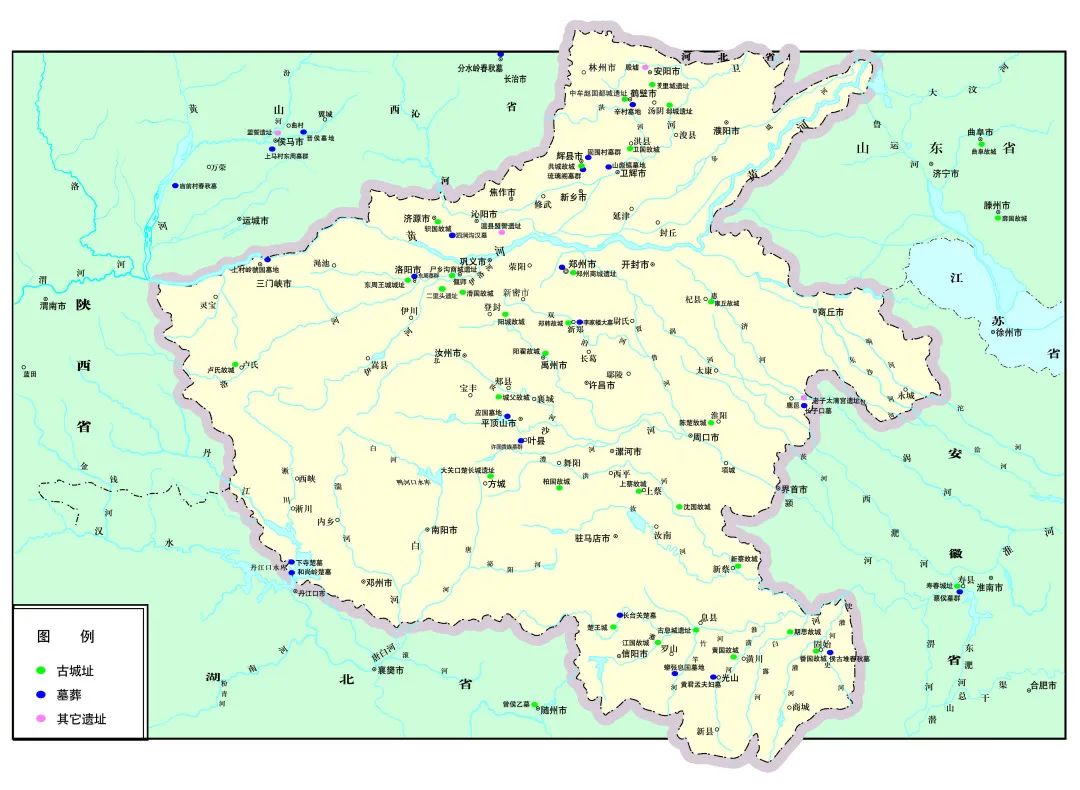
Distribution map of major Xia, Shang and Zhou sites in Henan Province
"We hope that through the platform of Shanghai Expo, through the display and dissemination of cultural relics, we can tell everyone the origin of Chinese civilization, China's past archaeological achievements and development history. This is also one of the purposes of our exhibition." Chen Jie said.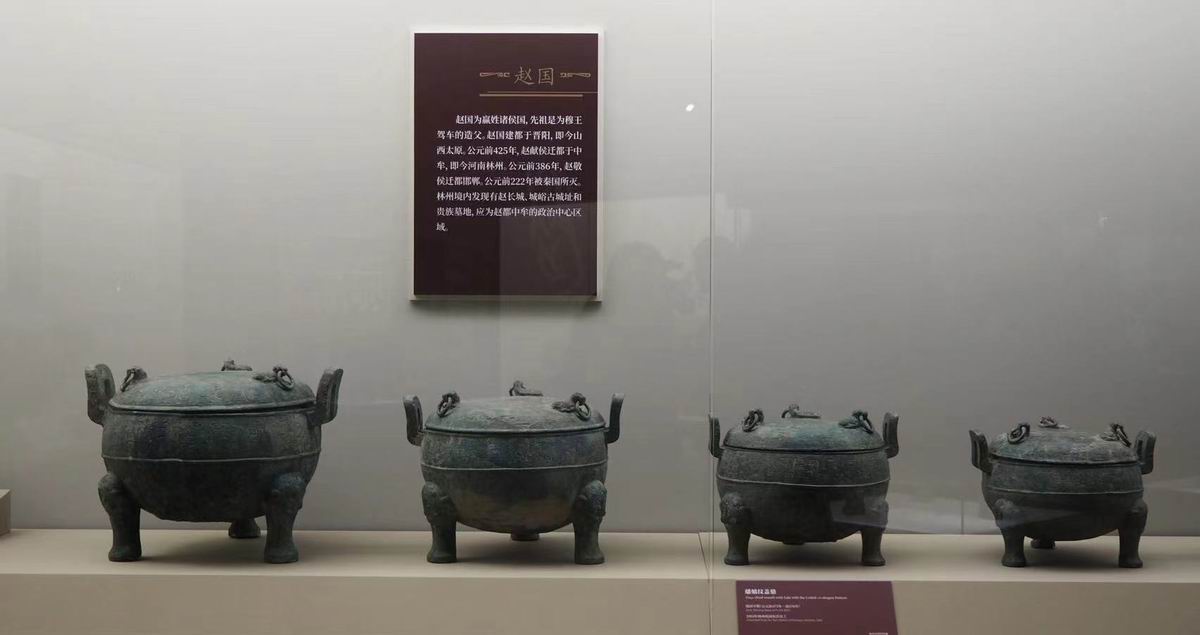
"Panchi Pattern Covered Ding" at the exhibition site
The exhibition is located in a large exhibition hall on the first floor of the Shanghai Museum. The surging journalists saw at the scene that most of the cultural relics have been placed in the showcases. This afternoon will be unpacked and exhibited are three heavy cultural relics, the Fuhao owl statue, the inlaid turquoise mythical beast, and the jade pendant in the shape of a sitting man, two of which were unearthed from the famous Fuhao tomb in Xiaotun, Anyang.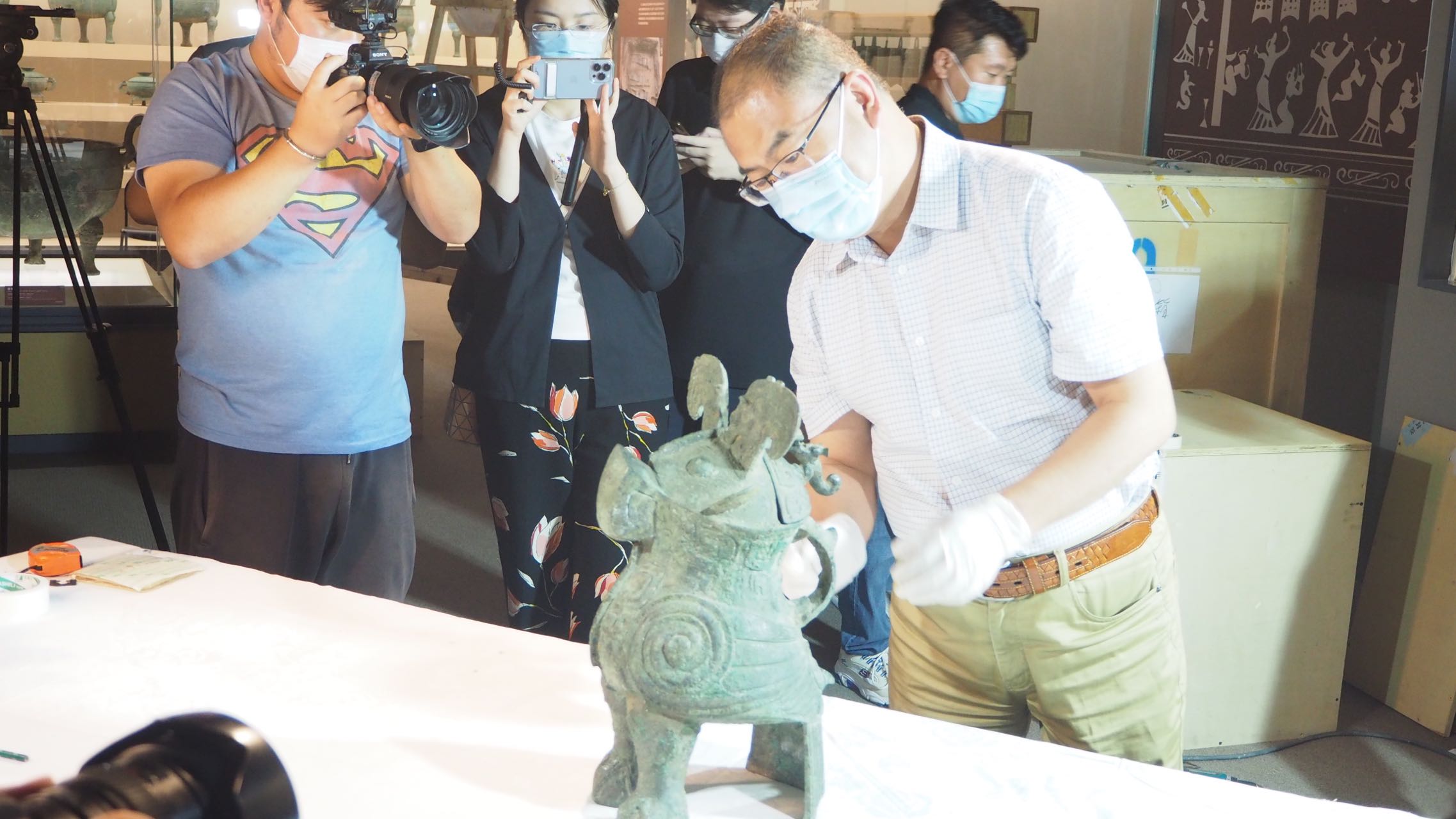
"Women's Good Owl" exhibition layout
"The discovery of Fuhao's tomb is of great significance to the whole of Chinese archaeology." Chen Jie said. Fu Hao was the first female military commander in Chinese history (oracle bone inscriptions), and she was also an outstanding female politician. She was the wife of King Wuding of Shang.In 1976, his complete tomb was discovered in the northwest of Xiaotun, Anyang, Henan Province, and 1,928 burial objects were unearthed, including 468 bronzes, 755 jades, and 564 bone artifacts. In addition, there are stone tools, ivory products, pottery and shells. The artifacts unearthed from the tomb of Fuhao are exceptionally exquisite, such as the exquisitely crafted little jade man and the ivory cup inlaid with turquoise. Among the large number of unearthed bronze wares, many have the inscription "Fu Hao" cast on them. The Fuhao Owl Zun is a very important piece of bronze ware, and the inner wall under the body of the cultural relic also has the inscription "Fuhao".
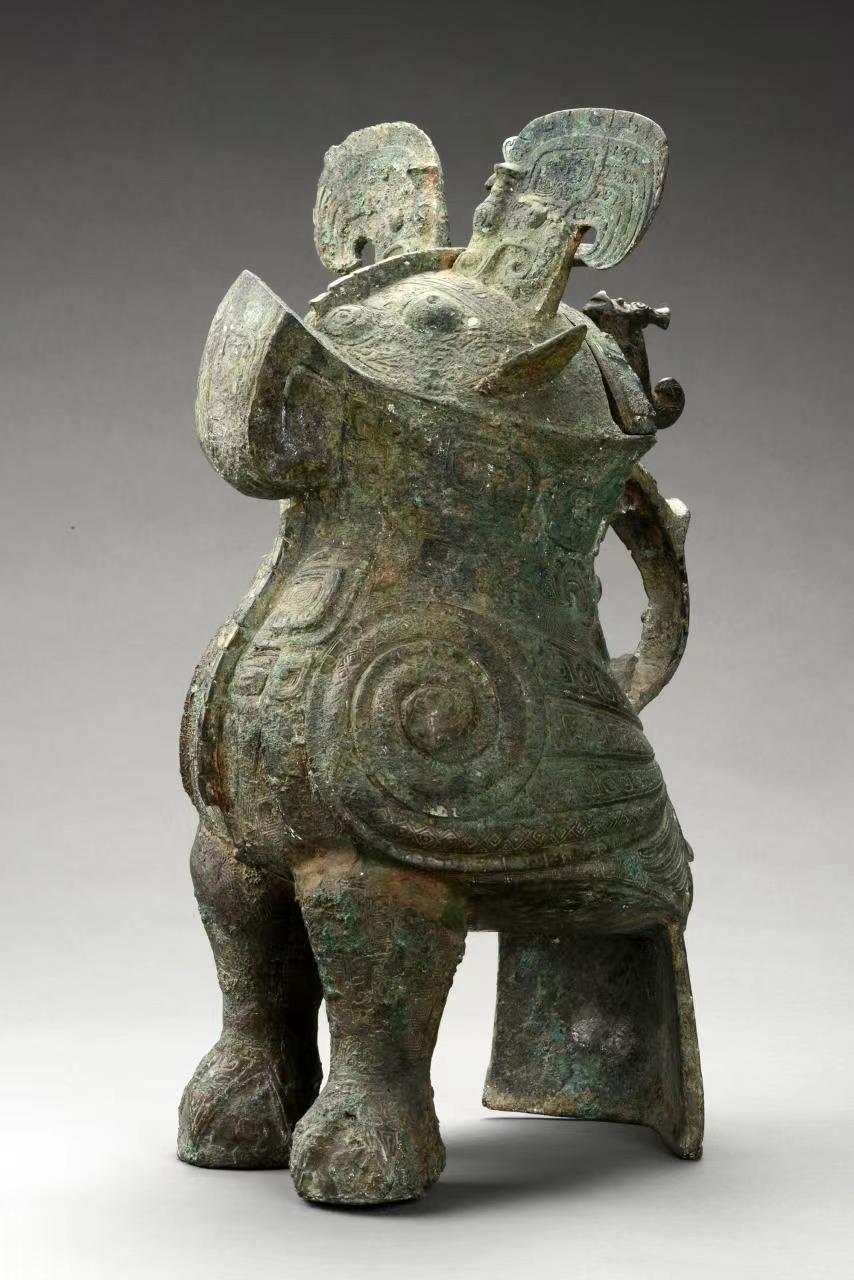
Fu Hao Zun Zun Late Shang Dynasty (13th century BC - 1046 BC) height 45.9 cm, mouth length 16.4 cm
Unearthed from Fuhao Tomb in Xiaotun, Anyang in 1976, the owl in the collection of Henan Museum stands in a standing position, with its head held high, round eyes, wide mouth, small ears, high crown, high chest and wings, thick legs, and a wide tail for support. The owl's head has a semi-circular mouth at the back, with a cover on top. The owl's back is cast with a hawk, and the owl's jewelry is in the shape of a beast's head. There is a gate edge on the middle of the face and on the chest. The whole body is full of flowers, decorated with animal face patterns, Kui patterns and snake patterns. And so on, and with thunder pattern backing, the front of the cover has a pointed-billed standing bird, and a standing dragon with an arched body and a curly tail at the back. There are two inscriptions on the inner wall under the mouth of the vessel.
Many bronzes unearthed from the tomb of Fuhao bear the inscription "Fuhao", which can be used as physical evidence to prove their identity. More than a dozen bronzes unearthed from the tomb of Fuhao will be exhibited at the Shanghai Expo.
At the same time, Fu Hao is also a very legendary figure in Chinese history. In the existing oracle bone documents, her name appears frequently. Only in the more than 10,000 oracle bones unearthed from the Yin Ruins in Anyang, there are more than 200 mentions of her. A large number of oracle bone inscriptions unearthed show that the woman was ordered to fight on the battlefield many times and made great contributions to the expansion of the territory of the Shang Dynasty. She was also often instructed to preside over various ceremonies such as offering sacrifices to the heavens, ancestors, and offering sacrifices to the gods, and she was also an officer of divination.
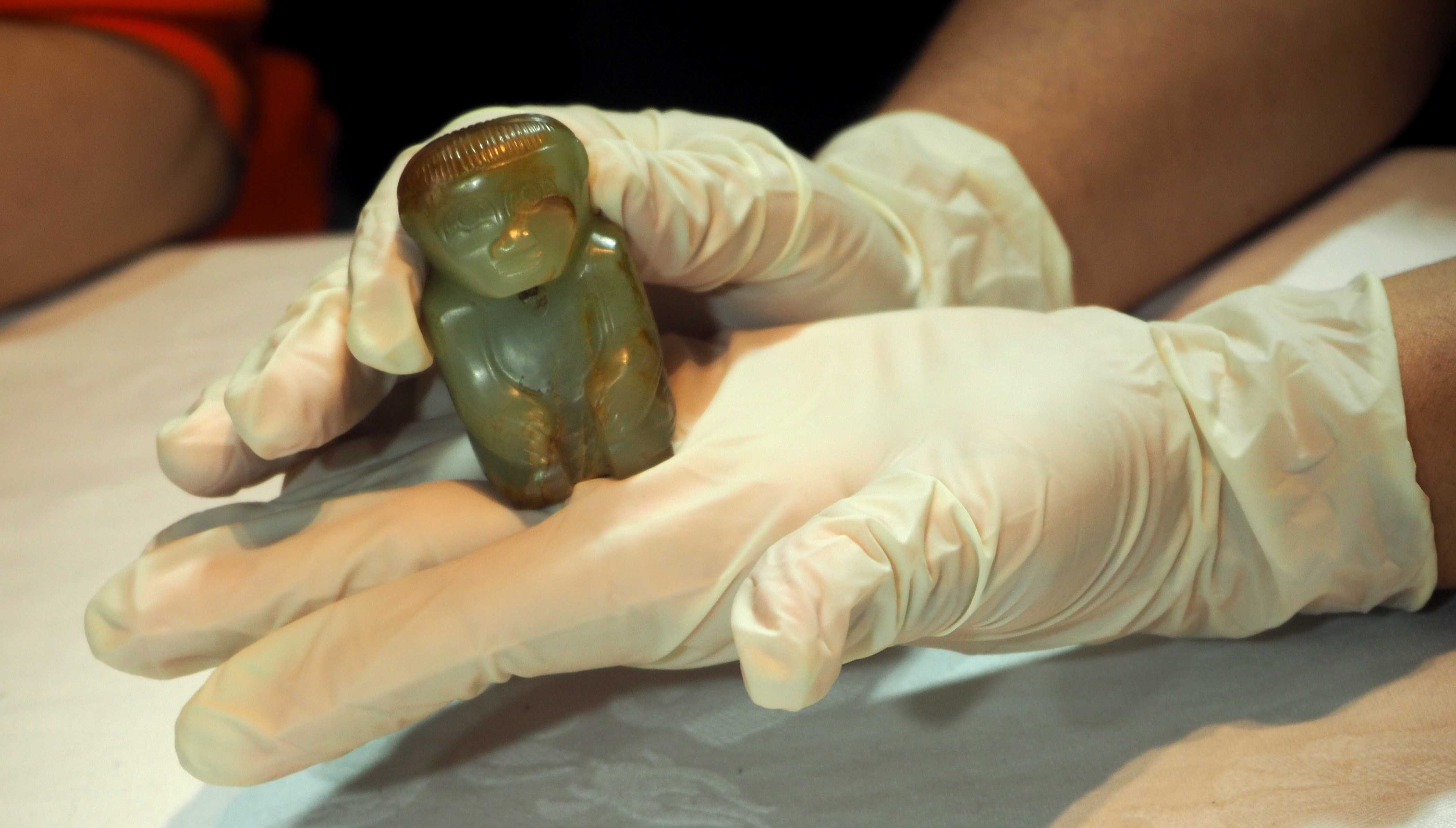
The "Xundi Sitting Human Shaped Jade Pendant" (Late Shang Dynasty) in the exhibition
Another important cultural relic displayed in this exhibition, "Xunzai Human Shaped Jade Pendant" was also unearthed in the tomb of Fuhao in Xiaotun, Anyang. When we usually look at it on the picture, we will think it is a very large jade sculpture. When we look at it up close, we find that it is very small. It can be described as "hand-holding", and it is precisely because of its small size that it can be more prominent. of sophistication. A closer look at this round carved figure is in the shape of a sundae, with his hands on his knees and his arms slightly bent inward. The forehead is broad, the words of minister, the nose of garlic, the mouth slightly open, and the short hair on the top of the head for a week. According to Chu Xin, deputy director of the curatorial department of the Shanghai Museum, the sitting posture of this round sculpture is very unique. It is a sundae sitting, that is, the knees and calves are touching the ground, the heels support the buttocks, and the upper body is upright, which is a very important sitting posture in the Shang Dynasty. Among the figures of the Shang and Zhou dynasties unearthed so far, most of the round-carved utensils adopt this posture.
A jade pendant in the shape of a sitting figure, late Shang Dynasty (13th century BC - 1046 BC), height 5.6 cm, width 2.8 cm
Unearthed from Fuhao Tomb in Xiaotun, Anyang in 1976, made of sapphire from the Henan Museum, the jade is lustrous and round. The figure is sitting in a sundae shape, with both hands on the knees, and the arms are slightly bent inward. The forehead is broad, the words of minister, the nose of garlic, the mouth slightly open, and the short hair on the top of the head for a week. Dressed with long sleeves and narrow neckline, with a high back neck. There is a small hole between the neck and the back of the head, and there is also a hole between the legs for wearing or inserting.
Sundae sitting, that is, the knees and calves are on the ground, the heels support the buttocks, and the upper body is upright. It was a very important sitting posture in the Shang Dynasty. Among the figures of the Shang and Zhou dynasties unearthed so far, most of the round-carved utensils adopt this posture.

The installation site of the inlaid turquoise mythical beasts (late Spring and Autumn Period)
The most cumbersome and meticulous piece of cultural relic in this exhibition is the inlaid turquoise mythical beast in the late Spring and Autumn Period. According to Chen Jie, because this cultural relic is the head of a dragon and the body of a tiger, it is difficult for the academic circle to name it accurately, and it is usually called a "divine beast". Surging News saw at the scene that the mythical beast has a peculiar shape and is exquisitely made, with a dragon head, a tiger neck, a tiger body, a tiger tail, and a turtle foot. The dragon opens its mouth, sticks out its tongue, and there are six dragons on the dragon's head... The mythical beast is inlaid with turquoise, with patterns of dragon, phoenix bird, tiger, cloud pattern, vortex pattern, etc. The images of dragons, phoenixes and tigers are vivid. Due to the complicated shape of the beast, the body is divided into four parts, and the staff carefully assembled it for nearly half an hour before fully presenting its shape.
Inlaid turquoise mythical beasts in the late Spring and Autumn Period (570 BC - 476 BC) with a height of 48.0 cm, a length of 47.0 cm and a width of 27.0 cm
Unearthed M9 in Xujialing, Xichuan in 1990. The Henan Provincial Institute of Cultural Relics and Archaeology hides the dragon head, tiger neck, tiger body, tiger tail and turtle feet. The dragon opened its mouth and stuck out its tongue, and there were six more dragons on the dragon's head. There is a seat on its back, and there is a Benz-shaped beast on the seat, with a curly tail and the tail of a snake-shaped dragon in its mouth. The snake-shaped dragon holds its head high, with three horns on its head, sticks its tongue out, and bows. The body of the beast is inlaid with turquoise, with patterns of dragon, phoenix, tiger, cloud pattern, vortex pattern and so on. The images of dragons, phoenixes and tigers are vivid. The beasts are unique in shape and exquisite in production.
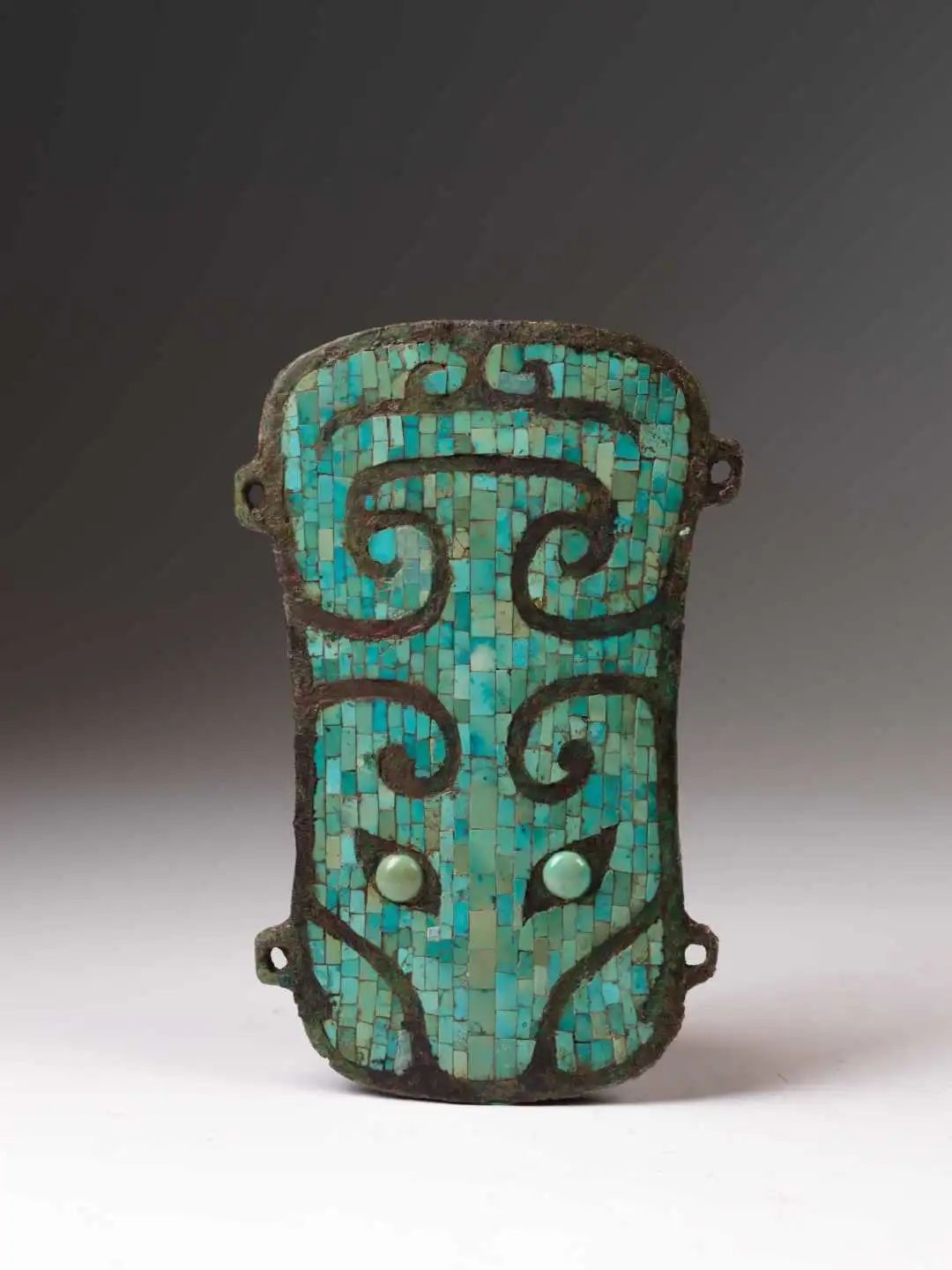
Inlaid turquoise animal face plate decoration Exhibition period 7.30-8.30 Late Xia Dynasty (18th century BC - 16th century BC) height 16.5 cm, width 11.0 cm Unearthed in 1984 Erlitou Site VI M11 Collection of Erlitou Xiadu Site Museum
"This time we will also show other cultural relics inlaid with turquoise, such as the very famous 'inlaid turquoise animal face plaque' unearthed from the Erlitou site. In fact, this is also a very successful craft in the Xia, Shang and Zhou dynasties, reflecting the Important craftsmanship characteristics and superb craftsmanship of the time.”
"Si Mu Xin Gong" at the exhibition site
In addition, important cultural relics such as Simu Xingong of the late Shang Dynasty, gold belt ornaments of the late Western Zhou Dynasty unearthed from the Guoguo cemetery in Sanmenxia, carved inscriptions of the late Shang Dynasty, bronze wares (jiudings) unearthed from the sacrificial site of Zhengguo in Xinzheng in the mid-Spring and Autumn Period and other important cultural relics will also be exhibited. . The Shanghai Bo side said that more wonderful cultural relics will be left to unveil the mystery on the opening day. The exhibition will be on view from July 30 to October 23.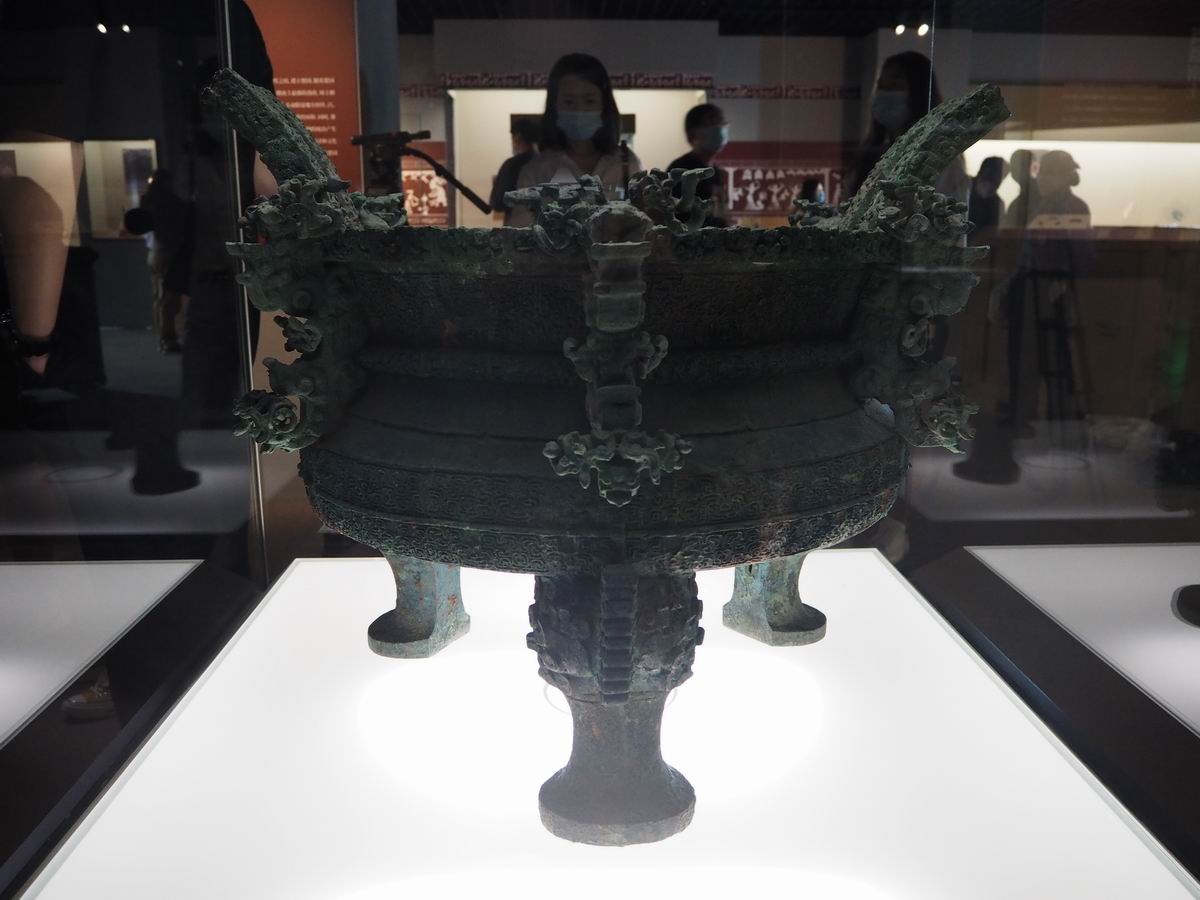
Exhibition site